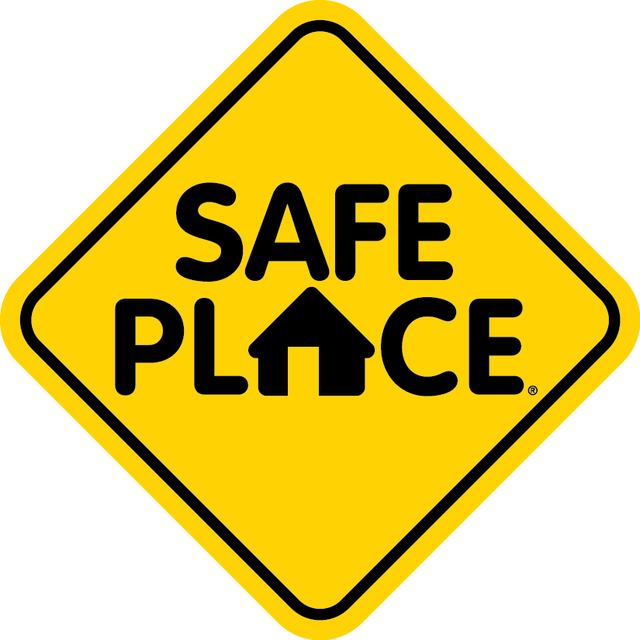Written by: Jennifer Scott, SpiritFinder
Note: Jennifer Scott runs SpiritFinder.org in order to tell her story on mental health and empower others to share theirs.

Image via Pexels
Written by: Jennifer Scott, SpiritFinder
Note: Jennifer Scott runs SpiritFinder.org in order to tell her story on mental health and empower others to share theirs.

Image via Pexels
Written by: Jennifer Scott, SpiritFinder
Note: Jennifer Scott runs SpiritFinder.org in order to tell her story on mental health and empower others to share theirs.

Written by: Elizabeth Smith Miller, Director of Marketing and Events, National Safe Place Network
May is National Foster Care Month, and the purpose of the month is to “acknowledge foster parents, family members, volunteers, mentors, policy makers, child welfare professionals, and other members of the community who help children and youth in foster care find permanent homes and connections.” It’s also a time to “renew commitments to ensure bright futures for more than 440,000 children and youth in foster care.”
National Runaway Prevention Month is the annual awareness and prevention campaign for runaway and homeless youth issues. Every November, participants across the country host activities and events that amplify the experiences of runaway and homeless youth and the role everyone plays in ending youth homelessness.
Runaway Prevention Month is spearheaded each year by the National Runaway Safeline (NRS), the federally designated communication system for runaway and homeless youth, with the support of the Family and Youth Services Bureau (FYSB).
I admit it. I was a runaway. Not in the traditional sense – we all know the statistics and the real stories behind runaway behavior. However, I ran away often. Whenever I was with an older sibling or parent in a store, I would take off when the person was not paying attention, and I would head straight for the school supplies. After a while, they knew where to look, and they would leave me alone to touch the paper, smell the crayons, and to stare in awe at the collection of glue, scissors, pens, and rulers before me. School was a haven. It was a place I could go and not hear fights, not hear cries, and not hear the frustrations that come with trying to raise your children on a week-to-week income with no room for anything but the basics.
I could go to school and learn about new things and different places. I could see other kids and could spot the ones who loved the experience as much as I did. I could also spot the ones who did not. My earliest school memories were tied to a small town filled with traditions and customs. In hindsight, I recognize the stares from those who lived “across the tracks” at my secondhand clothing and the old truck in which my father drove me to school. Those stares were full of unfriendly messages that I did not belong and that I wasn’t good enough. As I got older, I tried to buffer myself against the reaction of others, and I would ask my father to drop me off a little bit away from the school so I could walk and perhaps gain some measure of respect with the others who had earned the right to be one of the walkers. He was sure it was because I must have been embarrassed by the truck. My father was a smart man. He was also sensitive. I got to walk.
Written by: Jennifer Scott, SpiritFinder
Note: Ms. Scott offers a forum where those living with anxiety and depression can discuss their experiences.

Photo Credit: BrookLorin, Pixabay
Written by: Jennifer Scott, SpiritFinder
Note: Ms. Scott offers a forum where those living with anxiety and depression can discuss their experiences.

Most kids don’t have full-time jobs and major bills to pay, but they face plenty of pressure at home, school and even hanging out with friends.
Written by: Shauna Brooks, Performance and Evaluation Specialist, National Safe Place Network
About fifteen years ago, my partner Kim and I went to very upstate New York to visit her long-time friend who lived on a lettuce farm with her husband and two daughters, the elder 6 and the younger 3 years-old. I learned two very important lessons during our stay up North: the power of a wet paper towel and the meaning of care.
Written by: Tammy Hopper, Chief Strategic Initiatives Officer, National Safe Place Network
Have you ever felt “less than”? It is difficult to explain the feeling but there are times when you can be in a room by yourself and feel “less than”. Your life isn’t what you wanted. You didn’t meet the expectations of others and worse, you didn’t meet the ones you set for yourself. Sometimes you can be on crowded public transportation, face focused outward because looking at the walls of a tunnel are more comforting than looking into the eyes of fellow passengers. The thoughts are persistent – am I “less than” these other passengers because of how I dress, the way I look, the amount of money I have with me, where I am going? Sometimes you can be in a classroom or office and feel secure in who you are and what you know and still feel “less than” your peers or colleagues. Why do they get the interesting opportunities, or feedback, or acceptance?
“Less than” makes people do strange, hurtful, and, sometimes dangerous things. The bully feels “less than” and so will reach out in anger to ensure some sense of control and superiority. The driver with road rage reaches a boiling point and is committed to saying no – you are in my way, you are slowing me down, you are not better than me – I am not “less than.” The shooter who enters a building and takes the lives of others may even feel that any life, especially his or her own, is not worth living. They may believe there is no value placed on life because lives lived in fear, anger, poverty, mental health crisis, abuse, substance addiction - may be perceived as lives of value “less than” others.
Written by: Elizabeth Smith Miller, Director of Marketing & Events, National Safe Place Network
Are you one of the 41% of individuals who makes one or more New Year’s resolutions? In 2017, the top 5 New Year’s resolutions included:
Written by: Tammy Hopper, Chief Strategic Initiatives Officer, National Safe Place Network
It would be difficult for me to think about or discuss the holidays without remembering my paternal grandparents and the influence they had on my life. As my mother’s parents had passed before I was born, my only experiences with grandparents were from a couple who were courageous, hard working, simple and very different from each other.
Written by: Tammy Hopper, Chief Strategic Initiatives Officer, National Safe Place Network
If you applied for RHY funding this year, the staff of NSPN hope you have received good news. The work you do in your community is important and youth depend on your services. If you were successful, congratulations!
Written by Cerebral Palsy Guidance
Youth and family service organizations serve a multitude of young people, including those with disabilities. Children living with any type of disability are more vulnerable to bullying than their peers. With those disabilities that make a child look different, including Cerebral Palsy, the risk of being a victim of bullying is even higher. The Forum for Equality estimates that nearly 15-25% of students in the United States are victims of bullying. While bullying is a big problem for a lot of children, and the consequences can be serious, there are things that can be done to prevent this victimization and to help victims cope.
Written by: Shauna Brooks, MSSW; Principal Investigator, National Safe Place Network
This was supposed to be a 4-day weekend for me - Labor Day holiday Monday, and a vacation day Friday to bring home a newly adopted pet and allow some time for her to adjust to her new environment. This is the first time in almost 18 years my partner and I have added someone to our little family. We have talked about it and delayed and negotiated our preferences for so long. Kim wanted someone small, and I really like big dog personalities. Kim wanted a fur family member to provide me with emotional support. I also wanted a dog to help me be more active. After months, even years, we just couldn’t push it back any longer.
Written by Candace Leilani, Guest Blogger
“A day without laughter is a day wasted.” – Charlie Chaplin
Written by: Mark W. Wolf, Training Director at National Safe Place Network
This is my first attempt at a blog so bear with me. I volunteered to do this one because the most significant thing I have learned in my nearly 40 year career in the youth work field is the importance of taking care of yourself.
Written by: Hilary Smith, Freelance Journalist

Written by: Susan Harmon, Director of Safe Place National Operations, National Safe Place Network

Written by: Karen Sieve, Regional Safe Place Manager, Youth in Need
Summer is around the corner. Memorial Day means public pools are opening, and temperatures are warming up. Summer is an important time for youth outreach. Schools, which provide structure and additional supports throughout the fall, winter and spring, are not in session. Children, teens and those who care about them are looking for fun activities to keep them occupied and out of trouble. As temperatures heat up, however, many young people opt to stay indoors and find themselves home alone. This can make outreach a challenge.